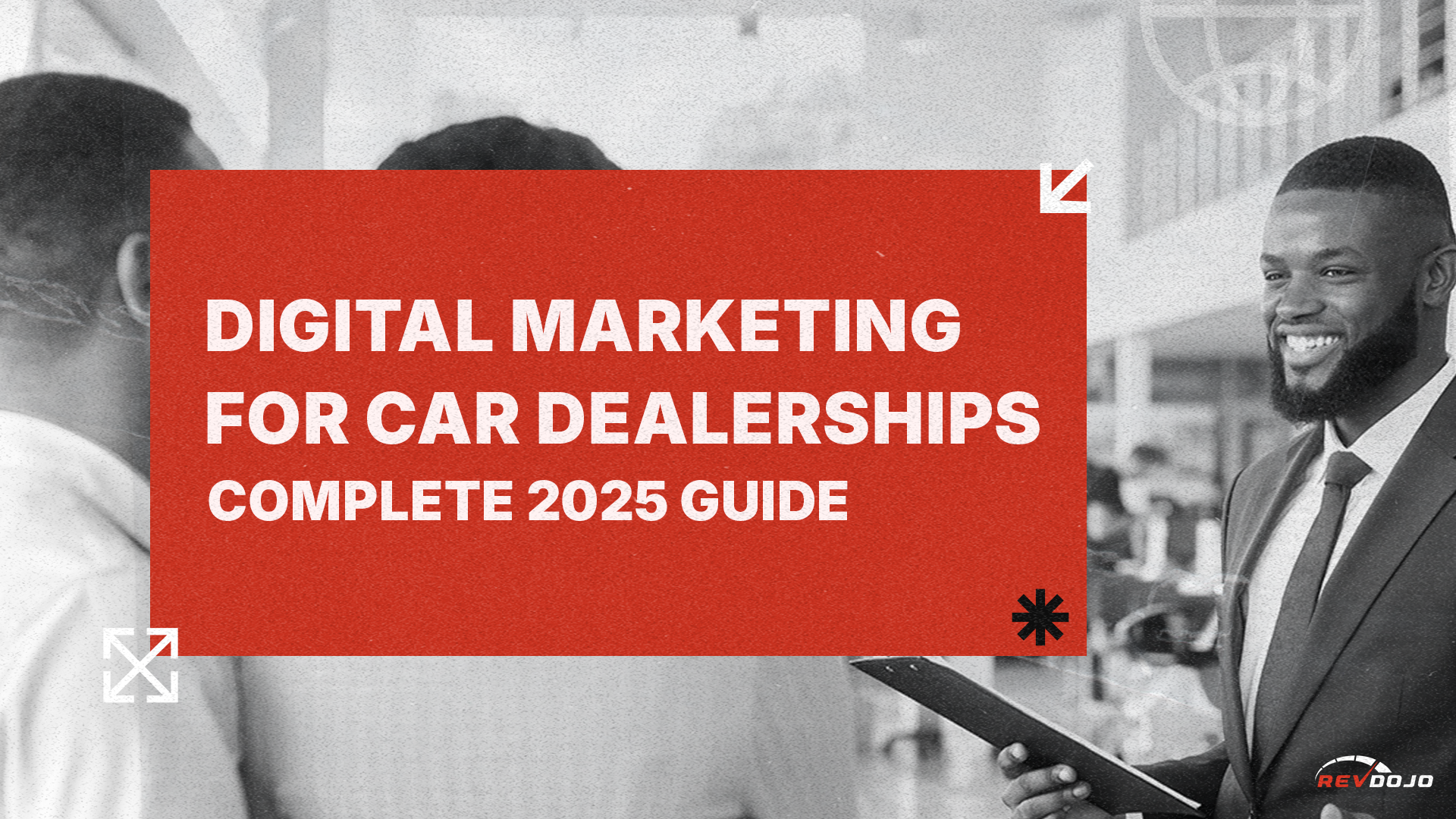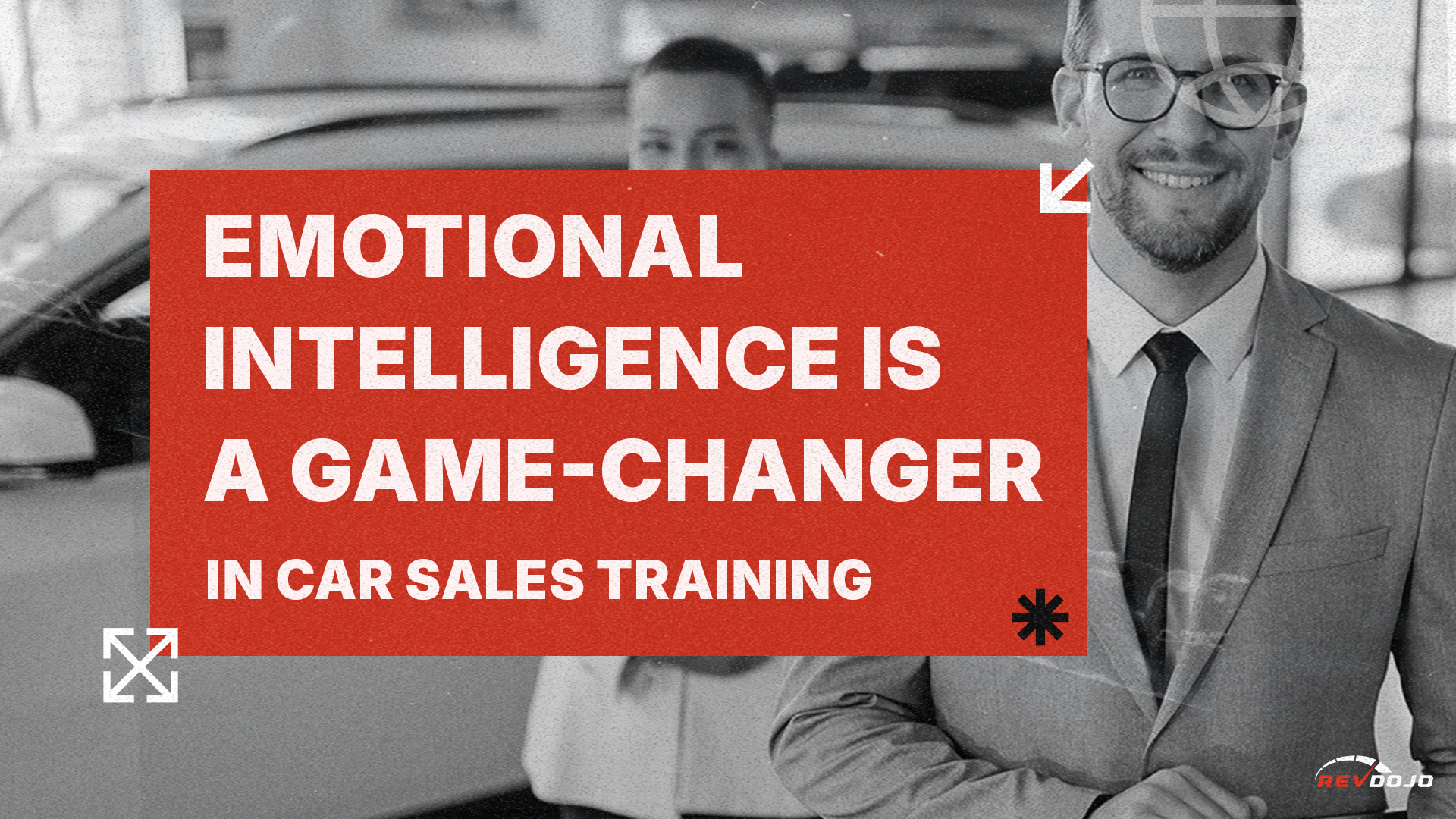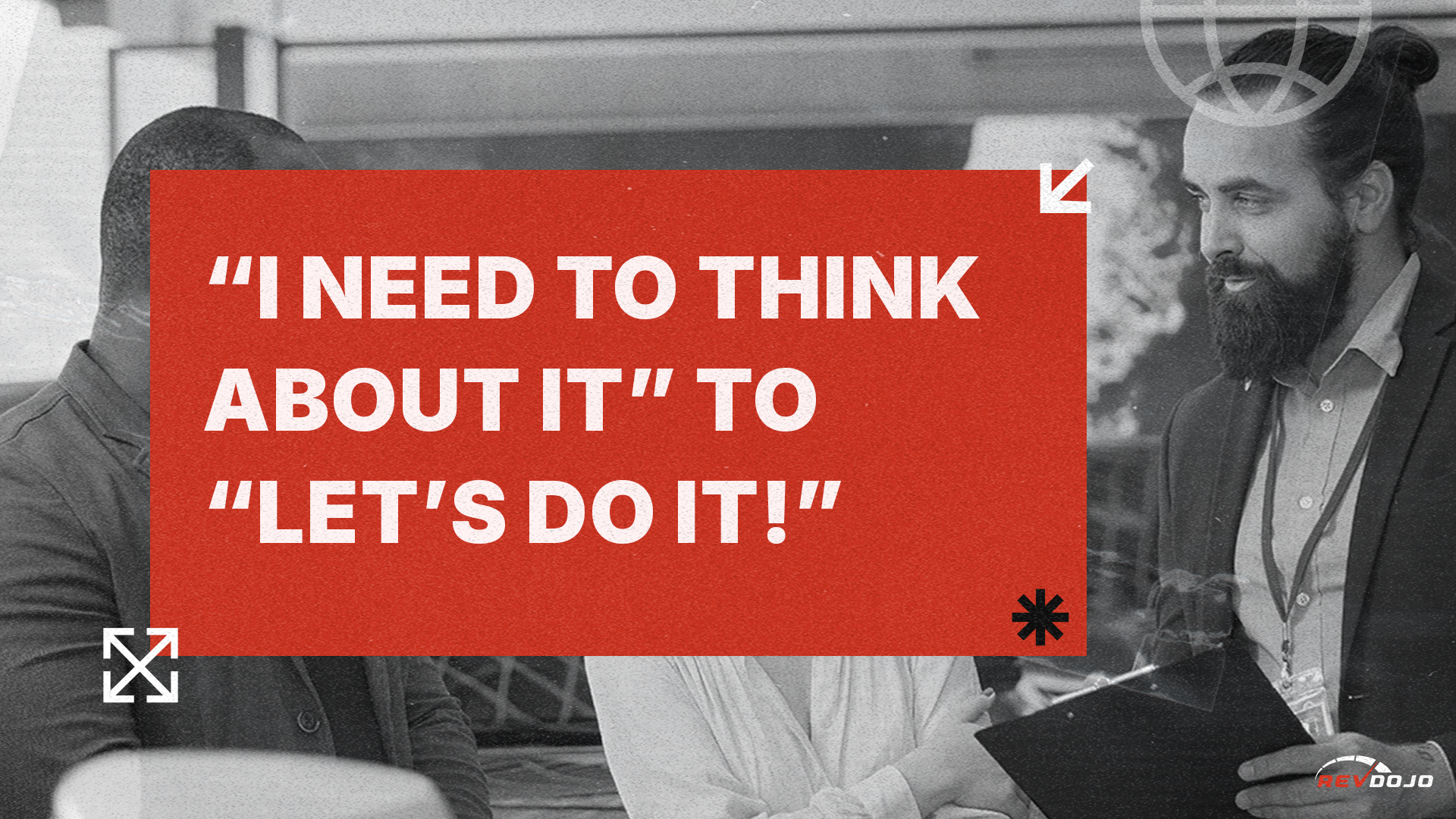Published 03 Sep 2021
Car Sales Training for Beginners: Green Pea Guide to Showroom Sales Processes
Blog
Automotive Sales Training
Sales Process
Car Sales Training
Selling Best Practices
Showroom Floor
Best Practices
Car Sales Training for Beginners
car sales training
Automotive Sales Training
Dealership Training
best car sales training
beginner car salesman
car sales training for beginners
car salesman techniques
car salesman tips for closing
first month as a car salesman
free car sales training
green pea car salesman
how to sell a car everyday
rookie car salesman tips
Car Sales Process
As a beginner car sales professional, one of the first things to do is to memorize your dealership’s showroom sales process. In automotive sales, it is your job is to help the buyer find a vehicle they love, demonstrate that vehicle, and ensure that they have a smooth transaction. That’s why every dealership has sales processes in place! They will help you accomplish these goals and sell far more cars, especially during your first month as a car salesman or woman.
Each dealership’s sales process usually has minor differences, but the overall structure tends to stay the same. The reason why is simple – it works! Car sales processes allow anyone to approach any car deal with a high likelihood of closing that deal. In this car sales training for beginners blog, learn everything you need to get started succeeding at selling cars with expert showroom sales processes!

Car Sales Training for Beginners: The Greeting
The greeting, or meet and greet, is the first step to any sales process. At first glance, this might seem as a straightforward as just introducing yourself to the buyer. However, the greeting is where you first start to set yourself up for future car sale success. In the greeting, you will start to build rapport, help buyers feel more comfortable, and get them committed to going through your sales process.
Compliment the Buyer
Something a lot of car sales professionals miss in the greeting is the opportunity to compliment the buyer. Nowadays, a majority of the customers that come into your dealership will have first picked out a vehicle they’re interested in online. So, use this as an opportunity to build rapport by paying them a compliment!
Put Customers at Ease
A lot of modern customers are on edge when they first walk through any dealership’s doors. This is also why buyer’s oftentimes throw out objections like “I’m not buying anything today” right at the meet and greet. So, it’s important that you practice having a warm, welcoming greeting that helps the buyer feel at ease. Essentially, you want to let them know that they came to the right place and you can help them with whatever they want to do. Developing a practicing one liners are a good idea. For example:
“If you’re looking for (vehicle), then you came to the right place. It’s a great time to be in the market for a car and I’m sure we’re going to be able to help you.”
“If you’re looking for the best price, you came to the right place.”
Sell Your Sales Process
Use this opportunity to let buyer’s know that you will be taking them through your sales process. Tell customers that before they go home, they will get to take a look at the vehicle, take a test drive, and see the numbers. This gets customers committed to going through the entirety of your sales process. For example:
“Before you go home, I’d be more than happy to show you the vehicle, we can take it for a drive, and I’ll get your pricing and payment information so you have everything you need to make an informed decision.”
Car Sales Training for Beginners: Fact Finding
Most car sales processes will move into fact finding after the greeting. Whether you are a beginner or expert car sales professional, fact finding is crucial to setting up strong car deals. It’s highly recommended that you conduct fact finding at the customer’s current vehicle because it helps gather more valuable information.
At this stage, you should find out information such as current vehicle likes and dislikes, current payments, why they are making the switch, etc. This information is crucial to making sure you land them on the perfect vehicle and will help you close the deal later on. During fact finding, also walk around their current vehicle to search for any damage if they plan on trading it in. Compliment their trade and keep any issues with the car in your back pocket to help you hold gross later in the deal during negotiations.
Car Sales Training for Beginners: Demonstration Drive
By now, you’ve landed the buyer on a great vehicle. So, the next step in the car sales process is the one solidifies a lot of deals – the demonstration drive! This is your chance to show off features and equipment in action as well as give the buyer a chance to drive the vehicle. This is most customers favorite part of the car buying experience and is a major deciding factor in whether or not they will make a purchase today. So, it’s important to be able to deliver a perfect test drive.
To do this, beginner car sales professionals will need to do a couple of things in advance. First, make sure you are prepared with extensive product knowledge. This is useful at any stage, but during the demonstration drive, your selling is amplified by allowing the customer to experience these features and equipment first hand! When you drive the car off the lot, it is your chance to sell. However, once you switch spots with the buyer, it’s time for you to stay quiet and let them enjoy the vehicle. So, make sure that you are ready to use your selling time effectively and efficiently.
Second, make sure that before you do a test drive, you ask your sales manager for your dealership’s set demo route. Having a set demo route makes the test drive easier for you, and means that the customer can experience the vehicle in optimal conditions – a smooth road, a great location to switch spots, etc.
Car Sales Training for Beginners: The Write-Up
After the demonstration drive comes the write up. In car sales, you want 100% of buyers to see the numbers. If buyers do not get written up, you will not sell a vehicle. So, regardless of how committed you think the buyer is, ask every single buyer that comes into the dealership to see the numbers.
In situations where a customer says they don’t want to see the numbers, you might have to do some convincing. However, they came this far into the sales process with you, so it would be a disservice not to get them all of the information. With these buyers, go into agreement with them and show that you understand that they don’t want to see numbers. Then, point out that they do not have to buy the car today and you would just like to provide the numbers so they can sleep on it or compare prices. If you’ve done proper fact finding, the vehicle shouldn’t be the issue. Instead, the customer might feel apprehension. By taking away the pressure, it is usually enough to move the deal forward. Once the buyers see the numbers, the deal will be a lot easier to close.
Car Sales Training for Beginners: Closing
When going for the close in modern car sales, it’s important to remember just how much the buyer has seen. They have likely researched online before coming to the dealership, and they have gone through your entire sales process. So, when you put numbers in front of them, very little should surprise them. It’s just a matter of presenting information in such a way, that makes it easy for the buyer to say “Yes” now!
Objection Handling
The close is when a lot of objections come out. Yet, throughout the sales process, you should’ve been gathering information that will help you move past these objections with logic! For example, if a buyer has an issue with the valuation of their trade, be ready to logically explain the valuation. Use information you gathered on their vehicle during fact finding to explain why the valuation is what it is. Additionally, be ready with quotes from third-party websites to support your dealership's valuation whenever possible.
Another classic objection in the close is with pricing. When this happens, be ready to negotiate using features and equipment instead! An example of this would be to show off a less expensive, lesser equipped vehicle early in the deal in addition to the vehicle they want. Then, when they bring up pricing during the close, offer to take another look at that lesser vehicle. Customers are used to paying more for extra features and equipment, and this helps to put pricing in perspective for buyers.
An In-Depth Look into Car Sales Processes
For a more in-depth look into each step of the car sales process, as well as additional tips, tricks, and insights that help you sell cars, check out our previous blogs:
The Greeting | Dealership Showroom Floor Best Practices
Fact Finding | Dealership Showroom Floor Best Practices
Demonstration Drive | Dealership Showroom Floor Best Practices
The Write Up | Dealership Showroom Floor Best Practices
Closing Techniques to Make the Deal Today | Dealership Showroom Best Practices
All blog posts

Automotive Digital Marketing for Car Dealerships: A Complete 2025 Guide

Emotional Intelligence is a Game-Changer in Car Sales Training

From 'I Need to Think About It' to 'Let’s Do It

From Showroom to Sold: The Psychology of Nurturing Car Sales Leads

The Role of Customer Experience in Closing More Automotive Sales

Top-Rated Automotive Internet Sales Training for Dealership Teams

Why Dealerships With Good Car Inventory Win (And How to Make Sure Yours Does)

Driving Sales Success: The Power of Accountability and Consequences in Automotive Sales Training

Top 10 Automotive Sales Tips to Turn Cold Leads into Hot Prospects

From Rookie to Rockstar: How RevDojo Transforms Car Sales Careers
RevDojo is the all-in-one solution for automotive businesses looking to thrive in today's competitive market.
© 2024 Revdojo. All rights reserved.